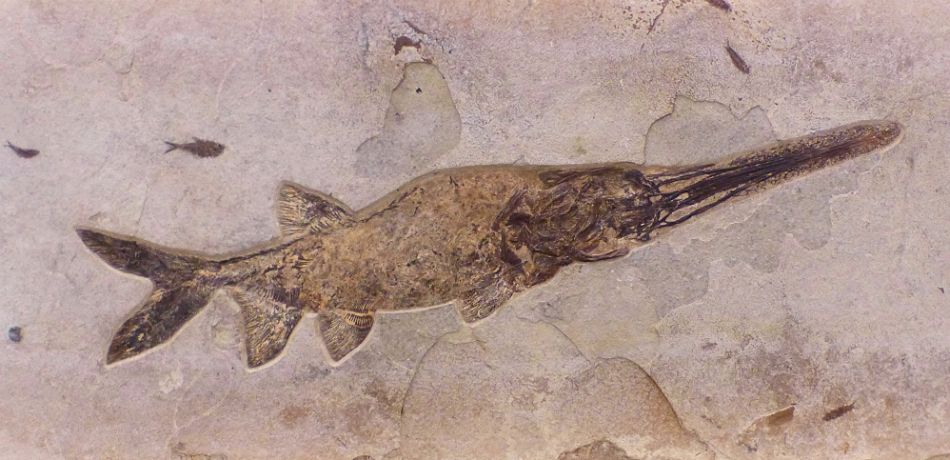The Cretaceous period was predominantly ruled by dinosaurs as the largest mammals, but many lesser-known species also thrived in the ancient waters, and one of them was the ‘Lizard Fish.’ A recent discovery of the fossils by a young lad has helped scientists study this 90-Million-old fish which were never located before in the territory of South America.
The fossilized remains of the fish were spotted by a 10-year-old vacationer with a keen eye. Researchers have confirmed that this one of a kind specimen has no other living relative present in the modern era. The ancient fish was found near a monastery in Columbia. Javier Luque, a paleontologist, and P.hD. candidate from the University of Alberta stated that the discovery of this fossil was unexpected, especially in South America.
The fossil was found embedded in the flagstones located outside the monastery which was in perfect shape after all these years. The fossil was discovered in the year 2015 after which the same was studied by the researchers to estimate that these fishes used to thrive in the ancient oceans that covered the entirety of now present Columbian territory. The Lizard fish was a long-jawed species that was named Candelarhynchus padillai. The word “Candelaria” in the scientific name represents the monastery’s name where the fossil was found. The second part of the name “rhynchos” loosely translates to the nose in Greek.
The study suggested that the fish lived in the deeper parts of the ocean with water that flowed at a fast pace. This particular species of fish flaunts some unique set of physical traits that make it stand out from the Dercetis kind of fishes. The Dercetis has been described as a subclass of bony fishes that were present in the ancient Earth. Unlike the Dercetis class, this particular specimen of Candelarhynchus padillai lacked the presence of the bony dermal plates on both the sides of its body. For the ray-finned fishes, this is a common trait which couldn’t be seen in the specimen.
Apart from this, the fossil specimen also flaunted features such as comparatively bigger pectoral fins that were located on the topside of the body as compared to the general features of class Dercetis. The fish also had a single set of conical teeth that were relatively smaller.
The lead author of the study, Oksana Vernygora, stated that this discovery of an ancient deep water fish is highly critical for the study of fishes present in the Cretaceous period as finding a fish that used to thrive in the deeper parts of the ocean is just like finding a rare gem. The thing that is the most surprising aspect of this discovery is that the fossil was still in an intact condition after being on the walkway for more than 15 years.
